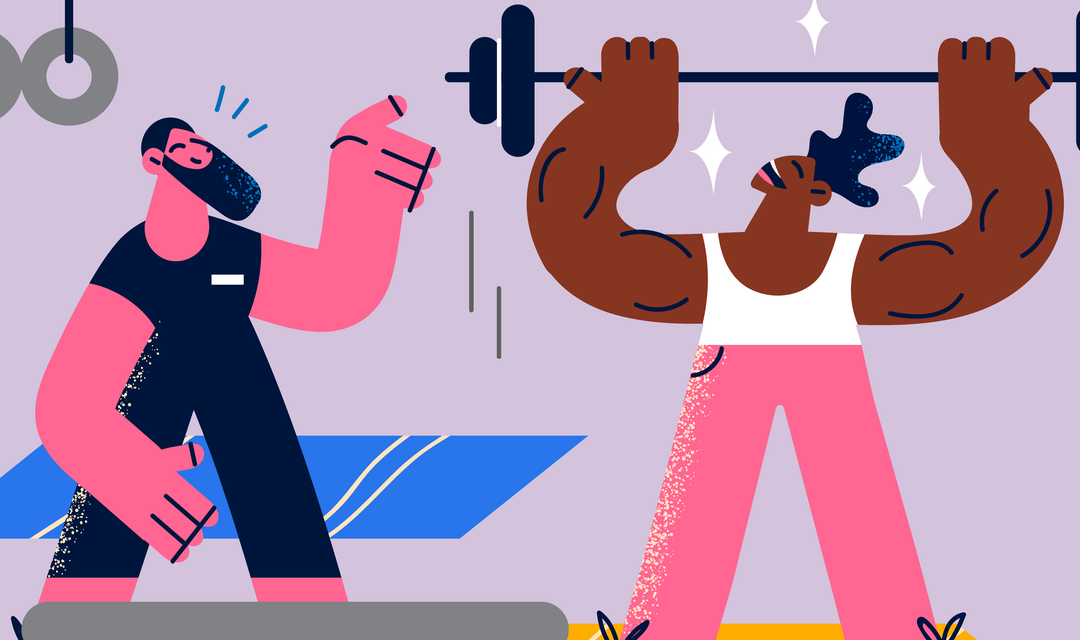Maybe establishing a strength training routine is a New Year’s goal you really want to stick to, maybe you’ve been hearing about the benefits of building and maintaining muscle for years and finally decided to give it a go, or perhaps you’re in it for the confidence boost that can come from lifting heavy things or squatting like a champ.
No matter the reason you clicked on this article—and no matter how capable you feel in other areas of your life—if you’re brand new to strength training, getting started can be intimidating. But, just like with any new endeavor, a little guidance and reassurance can go a long way toward helping you feel comfortable in your pursuit of stronger muscles. On that note, we asked Francine Delgado-Lugo, CPT, strength coach and cofounder of Form Fitness Brooklyn, for her best advice to set yourself up for strength training success.
Start by learning the basics.
Unlike, say, walking or jogging, strength training isn’t necessarily an innate form of movement, so you really shouldn’t wing it at first. Proper form not only allows you to perform the exercises safely, Delgado-Lugo tells SELF, but it also helps to build a solid foundation for progressing and getting stronger as you become more comfortable with the moves. Not knowing how to do certain exercises or having a specific plan to put them all together can also discourage beginners from sticking with their routine, she says, because the results (like increased strength) might be slow to come and some folks may even get hurt and give up.
That’s why Delgado-Lugo recommends investing in an online strength training program—so you’ll learn exactly how to perform the exercises, as well as when to increase the weight, the intensity, or the number of repetitions. “Most programs also come with videos, to give you visual guidance for how to complete a particular movement,” she adds. You can also try one of SELF’s free strength training workouts for beginners:
- A 12-Minute Total-Body Beginner Workout to Ease You Into Strength Training
- A Beginner Workout at Home Without Equipment That’s Fun and Easy
- A Full-Body Workout for Beginners That Will Hit All Your Major Muscles
If you can afford to make a bigger investment, Delgado-Lugo also suggests considering hiring a personal trainer to help you get started with strength training. “They can teach you proper form, as well as select exercises that address your specific goals,” she says. “A few initial sessions may be all you need to get into a routine and set you up to start working out on your own.”
What makes a “good” trainer? Delgado-Lugo says to look for someone who’s certified through a nationally recognized institution, like NASM, NSCA, NCSF, ACSM, ACE, or ISSA. And be sure to interview your prospective trainer to see if they seem like a good fit for your needs and that you like their personality and general vibe. “This is your experience, not theirs, so your comfort is what matters most,” Delgado-Lugo says.
Resist the urge to go too hard too fast.
“When you first start strength training, your inclination might be to go every day, but your body needs time to repair and recover from the strain of weight lifting or other forms of resistance training,” Delgado-Lugo says. “Lots of people get really sore when they first start out and then they give up because they feel overwhelmed by the discomfort.” A better option, she says, is to work out every two days or every other day at most. “This gives your body the recovery time it needs so that you can come back even stronger for your next workout,” she says. (Here’s more advice on how to create a workout schedule that works for you and your body.)
Eat something before your workout.
“Even if you don’t work up a breathless sweat when you lift weights or do other resistance moves, don’t underestimate the high metabolic demand of strength training,” Delgado-Lugo says. “It’s not uncommon for beginners to experience lightheadedness, nausea, or general weakness as the result of being under-fueled for their workout.” The best preworkout snack or meal is highly dependent on your individual needs, schedule, and what’s available to you, but Delgado-Lugo says you may want to have a mix of protein (to help your muscles recover) and carbohydrates (to give you energy), as SELF previously reported. Along with learning proper form and pacing yourself, fueling up can make your strength training workouts much more enjoyable—and much less likely to elicit a “forget this” attitude when you’re in the middle of a reverse lunge.
Related:

